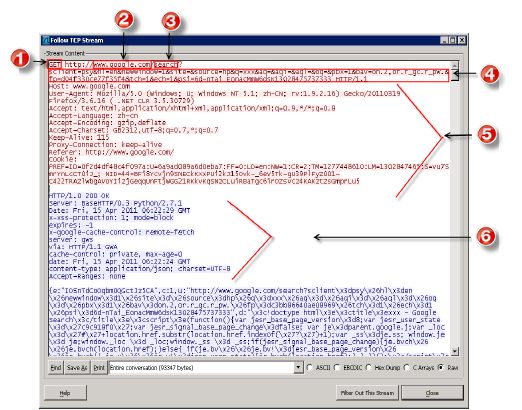The Packet Capturing wizard
is located at . Use the captured packet to perform traffic debug or analysis.
Choose a single or multiple network interfaces on which to simultaneously capture
network
packets. After the capture starts, the elapsed time displays. The capture operation
stops when
the administrator clicks Stop capture or when the configured time or size
criteria is met.
The packet capture for each interface saves as an individual file using the naming
convention
of “capture-{interface}-{date:time}.pcap”. For example
capture-eth0-2013-07-02.1329518492.75.pcap.tar.gz would be the file name
for the packet capture on the eth0 network interface performed on July 2, 2013.
After the network packet capture completes, all packet capture files are saved in
one
compressed package file named to “capture-{date}.tgz”. This file displays in
the downloadable list. Either download or delete the compressed file.
Packet capture for a Google search
Components shows in the packet capture
| 1 |
Request method |
| 2 |
URL host |
| 3 |
URL path |
| 4 |
URL query |
| 5 |
Request header |
| 6 |
Response header |
